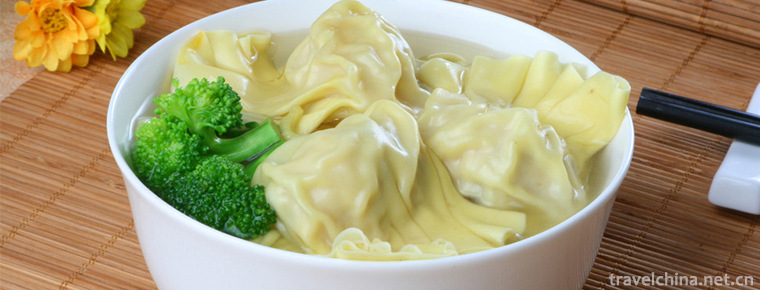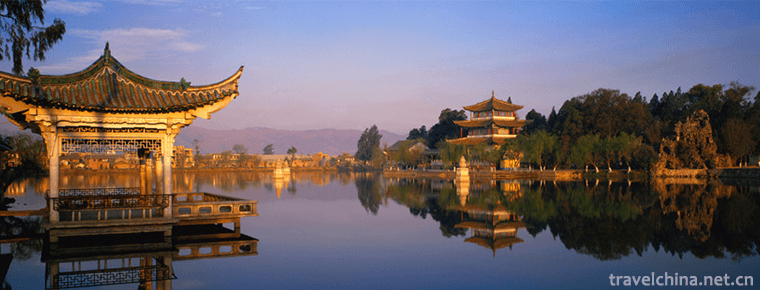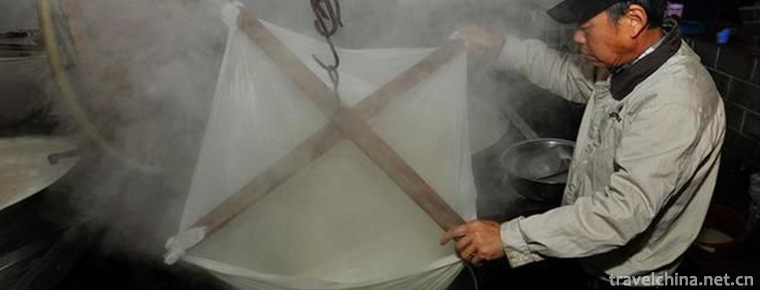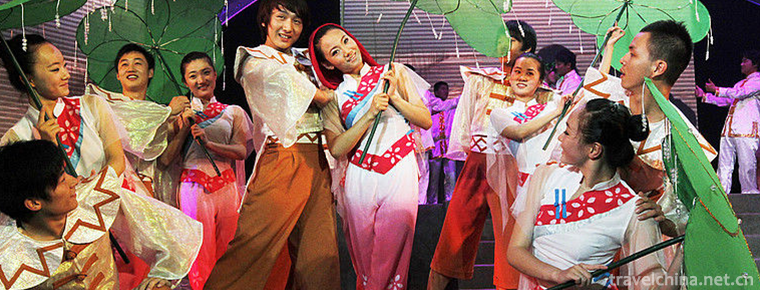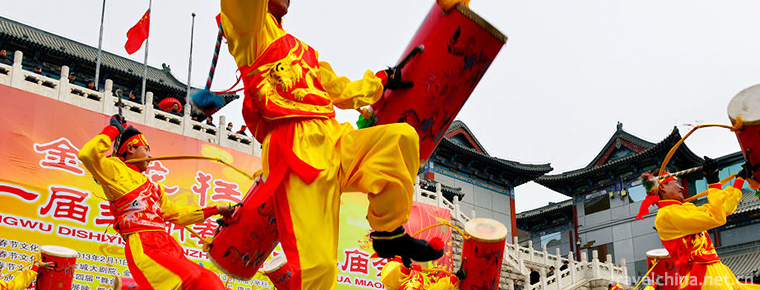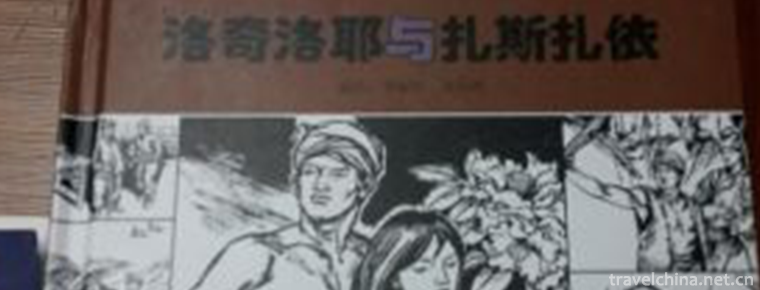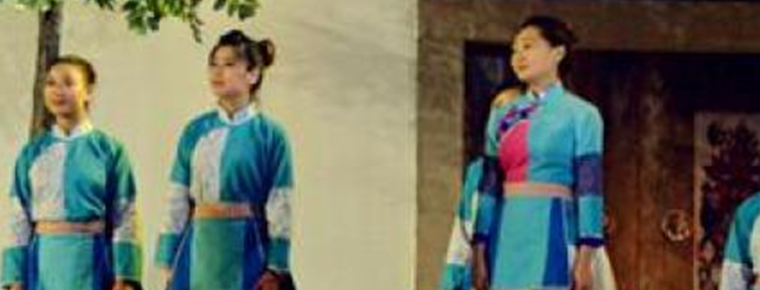The Making Skills of Hui Ink
The Making Skills of Hui Ink
Hui ink production technology, Jixi County, Shexian County, Huangshan Tunxi District, Anhui Province, local traditional handicraft, one of the national intangible cultural heritage.
Hui ink production can be traced back to the late Tang Dynasty, and reached its peak in the Song, Yuan, Ming and Qing Dynasties. Hui ink production technology is complex, such as Tung oil, linseed oil, raw paint have unique refining, cigarette lighting, cooling, collection, storage methods, the construction mode of pine kiln, the time and quantity of burning and adding pine branches, smoke collection and glue selection, boiling, ingredients and agents also have their own secrets.
Hui ink is one of the treasures of Chinese traditional ink making techniques, and also one of the four treasures of the study at home and abroad. In May 2006, Hui ink making skills were approved by the State Council and listed in the first batch of national intangible cultural heritage list.
historical origin
From the existing historical data, Hui ink production can be traced back to the late Tang Dynasty. Due to the Anshi Rebellion, a large number of northern ink workers moved southward, resulting in the southward movement of ink-making centers. Xichao and his son fled to Shezhou in the south of the Yangtze River. Seeing the dense pine forests and clear streams, they settled down and reorganized the old ink industry. His ink is rich in texture and luster.
In the Southern Tang Dynasty, Li Yu was regarded as a treasure by Xi Shimo. Then his son Ting was appointed "Mohist official" and his surname was Li as a reward. The Xi family changed their surname to Li from then on. Since then, Li Mo of Shezhou has become famous all over the world. It has the reputation of "Gold is easy to get, but Li Mo is hard to get", and the national ink-making center has moved to Shezhou to the south. Since then, ink-making masters have emerged, such as Geng Shi, Zhang Yu, Pangu, Wu Zi, Dai Yanheng and so on. Huizhou ink industry has entered its first peak.
In the Song and Yuan Dynasties, ink workers added medicines to make ink on the basis of their predecessors. So that people not only used ink but also began to Tibetan ink, so ink began to develop toward handicraft.
In the Ming and Qing Dynasties, the production of Hui ink entered a flourishing stage. With the rapid development of social economy, the output increased sharply, and the ink-making technology also improved continuously. The pattern carving of ink and the decoration and production of lacquer boxes reached a peak state. Famous workers and famous products emerge in endlessly, forming the Xiuning School represented by Luo Xiaohua, Cheng Junfang and Fang Yulu. In the Qing Dynasty, Hui ink production was divided into four famous systems: Cao Sugong, Wang Jie'an, Wang Jinsheng and Hu Kaiwen. Among them, Wang Jinsheng and Hu Kaiwen were both from Jixi County. They improved and innovated Hui ink on the original basis, and finally made a treasure like "gold does not change". Among them, Longxiang ink, Tianchen ink, Xiantao stone ink, Lagerstroemia stellar ink, Fish Opera lotus ink, West Lake Ten Kingdoms ink, Earth ink and so on are all the masterpieces of the world, making Hui ink "like paint, black color, durable, non-sticky paper and pen, rich fragrance, worship". The characteristics of texture. According to the different raw materials, Hui ink in this period can be divided into pine smoke, oil smoke, lacquer smoke and super lacquer smoke, among which the most valuable are super lacquer smoke and other high-grade oil smoke ink. This kind of ink emits purple and jade luster, which can be used for the dark and moist color of calligraphy; it is used for painting strong but not stagnant, light but not gray, with distinct layers, so it is highly praised by the calligraphers and painters of past dynasties.
From Shunzhi period of Qing Dynasty to Guangxu and Xuantong period, Hui ink was handed down from generation to generation. In January 1956, only Lao Hu Kaiwen, Hu Kaiwen Zhengji, Hu Kaiwen Shunji and Hu Kaiwen Renshan Mozhuang were left in Shexian County. They were merged into the local state-owned Lao Hu Kaiwen Mozhuang Factory in Shexian County. Now Jixi's several ink factories not only produce large quantities of ink for calligraphy and painting, but also restore some excellent traditional products, such as "Treasures of Heaven", "Legacy of King Ting", "Eight Sceneries of Xiaoxiang", "Eight Treasures", "Twelve Zodiac", "Sword", "Moon Jing", "Golden Turtle", "Jade Cicada Ink", "Eighteen Arhats" and so on, are a complete collection of both practical value and appreciation value.
Inheritance and protection
Inheritance value
The ink pattern of Hui ink is a comprehensive art treasure, which is composed of painting, calligraphy, sculpture and sculpture by skillful craftsmen carving famous people's calligraphy and painting. In many aspects, such as industrial drawing, decoration art, printing, medicine and porcelain painting, Hui ink has also been widely used.
Since contemporary times, Hui ink has innovated, developed and restored the production of tea ink, green ink, cinnabar ink, multicolor ink and antique hand-roll ink on the basis of inheriting traditional technology, and added and developed new varieties. In addition, making ink ingots into various art forms and applying colorful, embedded in the Jin box for people to collect, is a major feature of modern ink industry.
Inheritance status
With the progress of society, the living environment of "Four Treasures of the Study" has changed, gradually losing its use value and fading out of people's lives. Traditional ink has been replaced by chemical ink, gradually fading out of people's lives, not to mention the narrow range of ink ingots. The four treasures industry of study is facing many difficulties, including shortage of raw materials, shortage of talents, backward production mode, high waste and high cost. The felling of raw materials Photinia spp. has increased, resulting in scarcity of raw materials, soaring prices and poor efficiency of ink-making enterprises.
Secondly, in the traditional production of Hui ink, the labor intensity is high and the income is not high. Especially in the cigarette making process, it is dirty and tired and needs to work in the high temperature environment. Nowadays, few young people are willing to learn and work. As the older generation of ink-making artists gradually die of old age, the inheritance of Hui ink-making skills is facing difficulties.
Inheriting characters
Zhou Meihong, male, Han nationality, born in June 1957 in Jixi County, Anhui Province. In June 2007, Zhou Meihong was selected as the representative successor of the first batch of national intangible cultural heritage projects and declared in Shexian County, Anhui Province.
Wang Aijun, male, Han nationality, born in February 1965 in Jixi County, Anhui Province. In June 2009, Wang Aijun was selected as the representative successor of the third batch of national intangible cultural heritage projects and declared in Jixi County, Anhui Province.
protective measures
On December 29, 2011, the founding meeting of Jixi Huimo Association was held. Representatives of Huimo enterprises and people who collect and study Huimo ink from all over the county participated in the meeting. The General Assembly adopted the "Work Report" and "Constitution", and elected the leading body of the Association. Wang Aijun, the national representative successor of Hui ink production technology and chairman of Hu Kaiwen Ink Co., Ltd., was elected president.
On May 3, 2018, Vice Chairman of Xuancheng Political Consultative Conference, Eunchaodong, led the research group of "the protection, inheritance and industrial development of the four treasures in the study", and went to Jixi County to investigate the situation of "the protection and industrial development of Hui ink technology".
major schools
She faction, represented by Chengjunfang and Fang Yulu, is an important member of Chengjunfang and Fang Yulu faction. Luo Xiaohua's tung oil fume ink is praised as "hard as stone, with rhino grain, black as paint, a snail is worth ten thousand dollars". Cheng Junfang's ink-making is based on Confucian ethics, astronomy, geography, the middle universe and ingenuity. His inscriptions and pictures are mostly from the hands of calligraphers and painters, with artistic attainments. Fang Yulu's "nine metaphysical and three-pole ink" has been praised as "unprecedented".
The founders of Xiu School are Wang Zhongshan and Shao Ge, followed by Shao Qiongqing, Wang Chunyuan, Sangzili, Wang Hongjian's father and son, Sang Zhenglin, Wang Junqing, Ye Xuanqing, Wang Fanfang, Ye Xianglong, Wu Qudun, Wang Shimao, Shao Zhenglin, etc. Most of them are ink-making workers with rich practical experience and skilled operation skills. They not only produce famous ink such as Taiji, Xuanxiang Taishou, Haqing and Songzi Climate, but also create a set of cluster ink, the so-called "Jijimo Ink". Meanwhile, they are famous not only for their quality, but also for their exquisite ink style.
social influence
Important exhibition
From September 8 to 12, 2017, the 3rd China intangible cultural heritage traditional skills exhibition was held in Huangshan City, Anhui Province. Wang Aijun, the inheritor of Hui ink production skills, performed on-site production techniques.
Honorary commendation
In 1915, Huimo "Earth Ink" was awarded the Gold Prize of Panama World Expo and the Excellent Prize of Nanyang Exercise.
In 1989, Huimo was awarded the National Quality Gold Prize.
In 1994, Huimo won the Gold Prize of the Fifth International Exposition for Asia and the Pacific.
From 2000 to 2004, Huimo has been awarded the certificate of the Four Treasures of Chinese Housing.
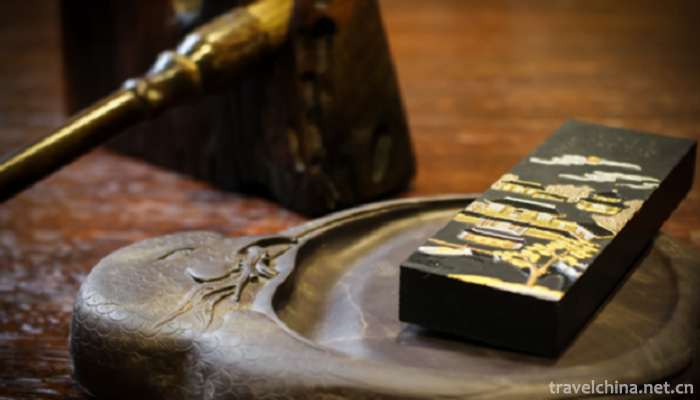
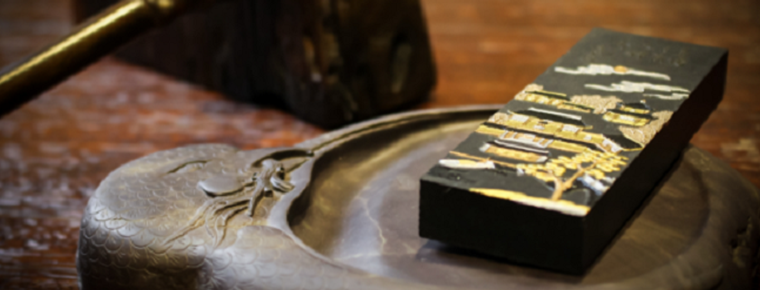
The Making Skills of Hui Ink
-
Wonton Noodle
The wonton noodle is also called the bamboo rising face. It is a characteristic snack in Guangzhou. It originated in Guangzhou and Guangdong cuisine
Views: 243 Time 2018-11-14 -
The classical gardens of Suzhou
The classical gardens of Suzhou / Suzhou classical gardens, referred to as Suzhou gardens, are world cultural heritage, national AAAAA class tourist attractions
Views: 297 Time 2018-12-06 -
Wucai Beach
The Wucai Beach is located in Buerjin County, Altay area, north end of Xinjiang. It is located on the first and second terraces on the North Bank of Ertiz River, the only one injected into the Arctic
Views: 127 Time 2018-12-22 -
Dajing gate
Dajinmen, the national key cultural relics protection unit. Located at the northern end of Zhangjiakou City, it was built in the first year of Shunzhi in the Qing Dynasty (1644 A.D.) and has a history
Views: 318 Time 2019-01-06 -
Traditional Manufacturing Techniques of Tofu
The traditional craft of tofu production is a traditional handicraft with a long history. Refers to the various methods of making tofu, tofu can be fried and stewed at will, lasting
Views: 150 Time 2019-04-28 -
Gaoyou folk songs
The earliest source of Gaoyou folk songs can be traced back to the Neolithic Age. Gaoyou Lake and Lixia River in Gaoyou City are the traditional folk songs widely spread in their production and life.
Views: 336 Time 2019-04-30 -
Lanzhou Taiping Drum
Lanzhou Taiping Drum, a traditional dance in Lanzhou City, Gansu Province, is one of the national intangible cultural heritage.
Views: 273 Time 2019-05-10 -
Liu Zi Opera
Liuzi Opera, a local traditional drama popular in Shandong, Henan, Hebei, Jiangsu and Anhui, is one of the national intangible cultural heritage.
Views: 174 Time 2019-05-14 -
Lodgeroye and Zaszai
Lodgeroye and Zaszai is a representative long poem of Hani poetry style, which is widely spread in all villages inhabited by Hani Biyo people in Hani Autonomous County of Mojiang. There are ten chapte
Views: 193 Time 2019-05-15 -
Manufacturing Techniques of Fukushima Ship with Watertight Cabin
The manufacturing technology of watertight compartment Fukushima, the local traditional handicraft technology of Jiaocheng District in Jinjiang and Ningde City, Fujian Province, is one of the national
Views: 163 Time 2019-06-15 -
the Wu Ballads
Wuge is the oral literary creation of the majority of the people in Wu dialect area, which originated in southeastern Jiangsu Province, and Suzhou is the central area for the generation and developmen
Views: 166 Time 2019-06-29 -
Hefei University Of Technology
HeFei University of Technology (Hefei University of Technology) is directly under the Ministry of education of People's Republic of China. National Key Universities By Ministry of Education , Anhui Pr
Views: 302 Time 2019-11-11
